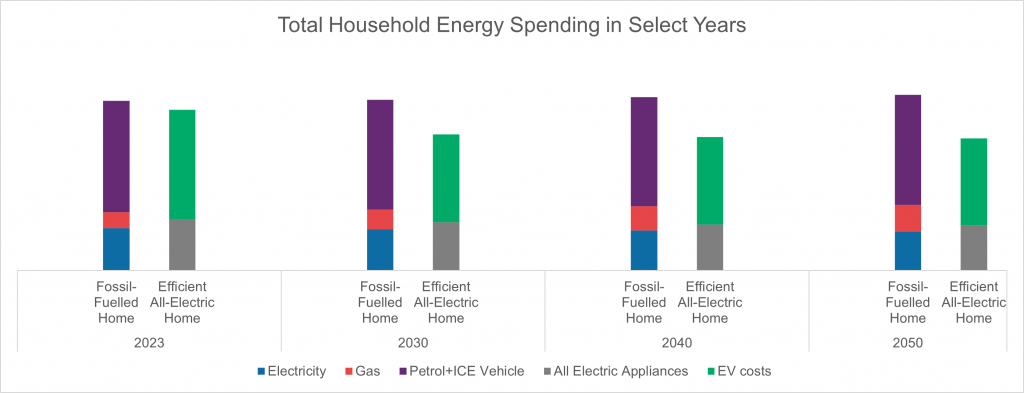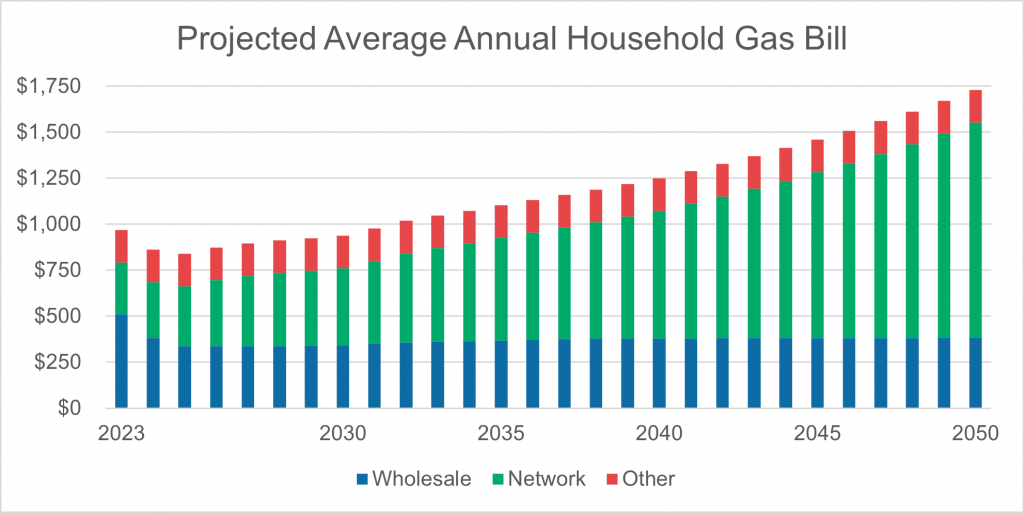Australian households are at a pivotal point in the energy transition. Under current policy and market settings, those that can afford to go all electric will do so and avail themselves of tremendous savings. Others who lack the agency or opportunity to make the switch will face higher and higher energy bills. The gap between those with access to cheap and clean energy and those without will grow. Alternatively, if governments step up and work together, all Australians can share access to the benefits of the transition, providing additional benefits for our communities, the economy, and the environment.
Household decarbonisation: the forgotten transition?
In March, the Commonwealth Government committed $1 billion in new finance to help households install efficient, electric appliances. Though large and welcome, that amount of financing was a drop in the bucket compared to the $20 billion the Commonwealth has committed to finance new transmission projects under the Rewiring the Nation scheme.
Rewiring the Nation, Renewable Energy Zones, and the Capacity Incentive Scheme are prime examples of state and Commonwealth programs and policies supporting the transition of the bulk electricity supply system. Primarily, these policies and programs are focused on enabling the retirement of the 15 existing coal-fired power plants in the National Electricity Market and ensuring they are replaced with enough renewable generation and storage to keep the lights on. These government programs are necessary for the transition. But they are not sufficient.
Just as there is a transition happening in the bulk supply system, there is an energy transition happening in Australia’s homes. Five million households are connected to the gas network and millions more use bottled gas. These households collectively use 18 million gas appliances. Australia has another 15 million passenger vehicles on the road today. To meet our climate commitments most cost effectively, these 33 million machines (18 million gas appliances and 15 million cars) must be replaced with electric alternatives.
For sufficient government policy to support the transition, Australia’s households require the same type of thoughtful, coordinated, and expansive policy support provided to developers and investors in transmission, renewable energy, and storage. Given all the policy support provided to facilitate the retirement and replacement of 15 coal plants, asking for similar or greater support for the retirement and replacement of 33 million cars and appliances seems entirely reasonable.
The benefits of household electrification will be widespread – but the costs for those left behind will be high
Recognising the need for greater support for households, Energy Consumers Australia engaged CSIRO and Dynamic Analysis to study the impact of the Australian Energy Market Operator’s Integrated System Plan – the most likely path to decarbonising the electricity sector – on households. Their analysis (PDF, 270.84KB)was striking, and overwhelmingly positive for households that can electrify.
Read the technical report (PDF, 270.84KB)
We learned that under AEMO’s Step Change scenario the average household is likely to save a bit of money today by replacing their gas appliances and petrol vehicle with electric alternatives. By the end of this decade, those savings begin to grow substantially, so that the average efficient, electric household is saving more than $2,000 annually compared to their neighbour that still relies on fossil fuels to keep their home warm and their car going.

Source: CSIRO and Dynamic Analysis report
Indeed, the research found that electric vehicles offer the biggest bang for the buck for individuals, the environment, and the community. Widespread uptake of electric vehicles is expected to:
- save their owners money over the long-term (even assuming a higher upfront cost for the car),
- reduce household emissions – the average household produces about three times as many greenhouse gas emissions from transportation as they do from using gas at home, and
- reduce electricity prices for all customers, by better utilising network infrastructure.

Source: CSIRO and Dynamic Analysis report
We also found that electrifying gas appliances and improving energy efficiency in homes will provide electrified households with additional savings compared to their neighbours using fossil fuel and with inefficient housing.
However, the story isn’t all positive. Half of Australians rent or live in apartment buildings face barriers to taking advantage of the opportunities and savings from decarbonisation. While in theory these households could save as much as their neighbours by going all electric, in practice they face sometimes insurmountable challenges to making the shift. Removing these barriers should be a key priority. There is an extensive list of additional burdens that individuals may face due to their personal circumstances, such as lack of financial resources and literacy or language barriers.
Finally, and perhaps most importantly for policy makers, CSIRO’s analysis identified that the last households who remain using the gas network are likely to face skyrocketing gas bills. These customers will become increasingly responsible for paying the fixed cost of the gas network as more and more of their neighbours go all electric.

Source: CSIRO and Dynamic Analysis report
The Need for a New National Partnership
In short, the scale of changes required by the energy transition at the household level in Australia is unprecedented. While there are potential savings available for consumers, there are also a lot of potential missteps and unintended consequences. That is why we have released our report, “Stepping Up: A Smoother Pathway for Decarbonising Homes.” (PDF, 5.86MB) It calls for a new national partnership that involves all three levels of government working together to develop comprehensive and cohesive strategies for decarbonising households.
Read the Stepping Up Report (PDF, 5.86MB)
Energy Consumers Australia’s consumer sentiment research demonstrates that new approaches are badly needed. Only one in five households surveyed believe the impacts of the transition to renewable energy have been clearly communicated. About half of households are worried about paying their electricity bills now, and a clear majority are worried about the ability of others in their community to afford energy.
Australian households are at a pivotal point in the energy transition. Under current policy and market settings, those that can afford to go all electric will do so and avail themselves of tremendous savings. Others who lack the agency or opportunity to make the switch will face higher and higher bills. The gap between those with access to cheap and clean energy and those without will grow. Alternatively, if governments step up and work together, all Australians can share access to the benefits of the transition, providing additional benefits for our communities, the economy, and the environment.

